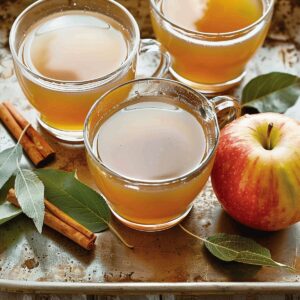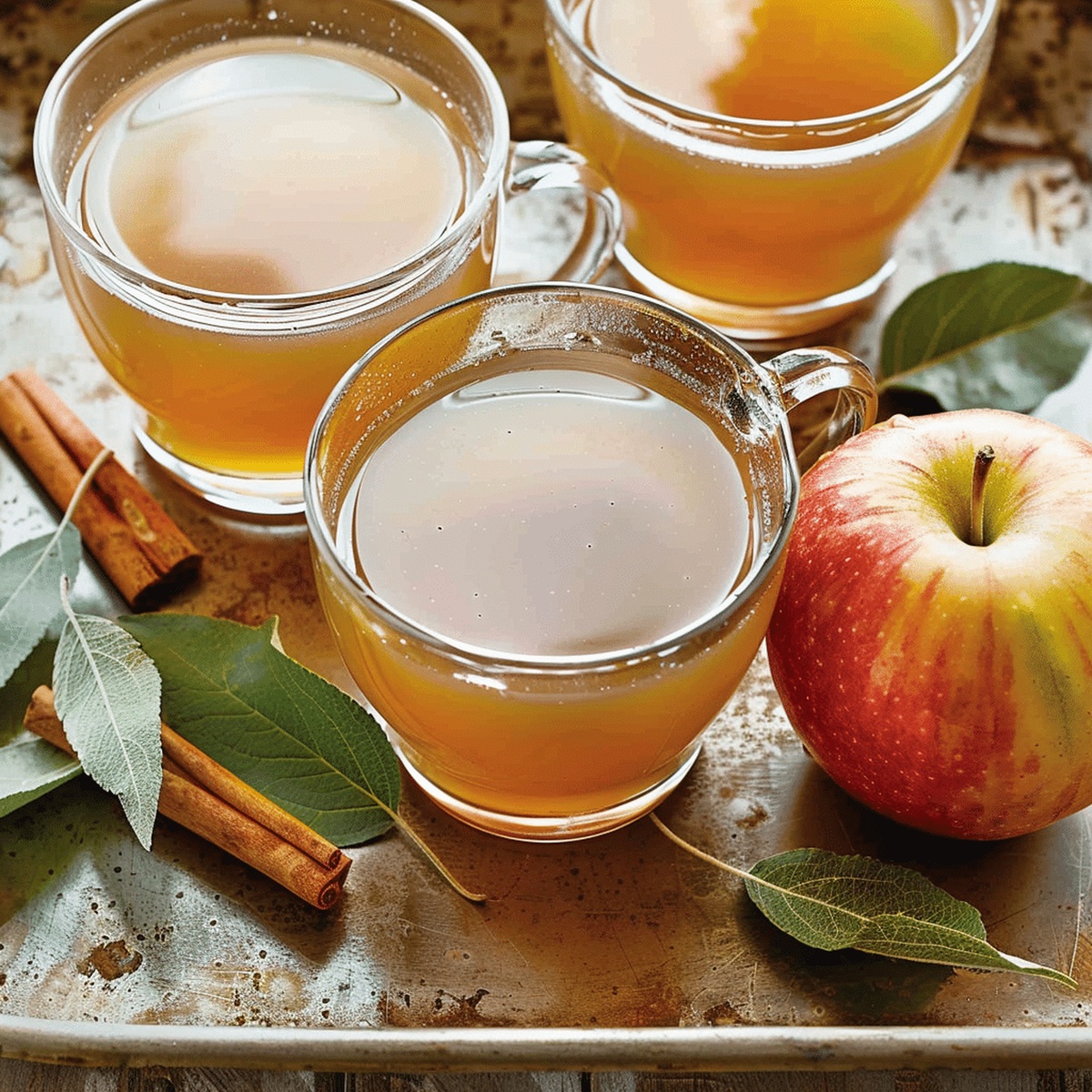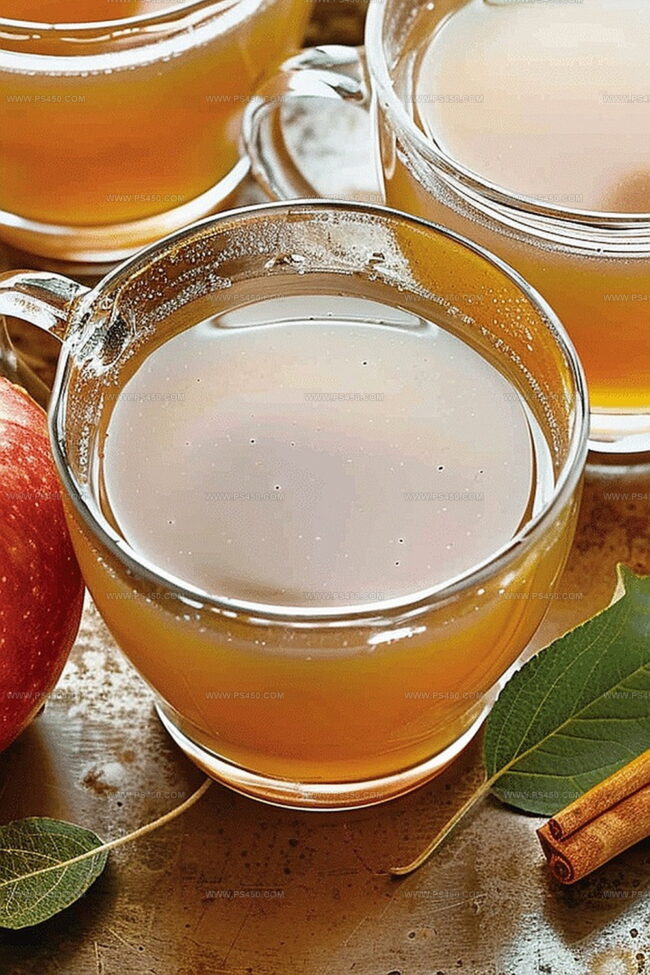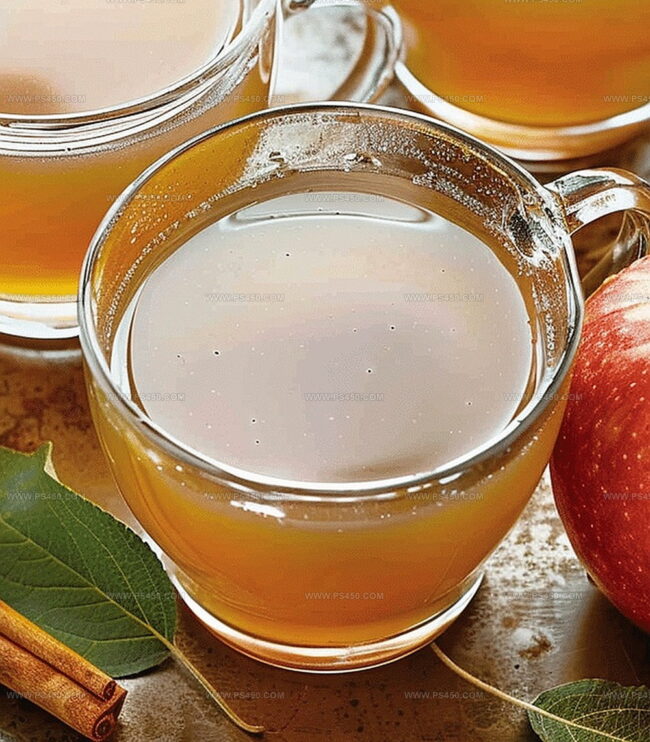Warm & Spiced Cozy Homemade Apple Cider Recipe for Fall Joy
Crisp autumn winds whisper the promise of a warm apple cider recipe that captures the essence of seasonal comfort.
As golden leaves drift softly to the ground, this homemade apple cider brings a magical touch of nostalgia to your kitchen.
Sweet and spicy aromas will dance through your home, weaving memories of cozy gatherings and cherished moments.
The simple yet delightful blend of ripe apples and warming spices creates a drink that soothes the soul and sparks joy.
Every simmering pot of this traditional beverage tells a story of comfort and connection.
Brew a batch and let the rich, fragrant liquid transport you to a world of pure, heartwarming bliss.
This recipe promises to become your new autumn favorite.
Quick Recipe Overview
Ingredients for Cozy Homemade Apple Cider
For Fruity Base:For Warming Spices:For Sweetening:Tools That Make Homemade Apple Cider Simple
How to Brew Homemade Apple Cider on the Stove or Slow Cooker
Thoroughly rinse whole apples. Quarter them without peeling, keeping the skin on for rich flavor and color. Toss apple pieces into a large cooking pot.
Drop in cinnamon stick, cloves, and star anise. Slice an orange into wedges and add to the pot for a bright, zesty undertone.
Cover apples and spices with water. Bring to a rolling boil, then reduce heat. Let the mixture simmer gently for 1.5 to 2 hours until apples become super soft and kitchen fills with warm, spicy fragrance.
Use a potato masher or large spoon to break down the softened apples. Press and mash to release maximum juice and intensify the cider’s depth.
Position a fine-mesh strainer over a clean bowl. Pour the mixture through, gently pressing to extract every drop of liquid. The result will be a rich, aromatic cider.
Taste the cider and adjust sweetness with brown sugar. Add extra spices if desired. Serve warm, garnished with a cinnamon stick or orange slice. For a cool version, refrigerate and reheat before enjoying.
Spice Variations for Your Homemade Apple Cider Blend
Serve Homemade Apple Cider Hot, Chilled, or Spiked
Store Apple Cider So It Stays Fresh and Fragrant
FAQs
Yes, you can mix apple varieties like Gala, Honeycrisp, and Fuji for a more complex flavor profile. Just ensure they’re ripe and fresh for the best taste.
Not mandatory. Cinnamon is the most crucial spice, but you can adjust or omit cloves and star anise based on your preference. The core flavor comes from apples and cinnamon.
Refrigerated apple cider stays fresh for 5-7 days. Always store it in an airtight container and reheat gently when you want to enjoy it again.
Absolutely! The stovetop method works perfectly. Just use a large stockpot and follow the same steps, monitoring the heat and water level during simmering.
Print
Cozy Homemade Apple Cider Recipe
- Total Time: 2 hours 40 minutes
- Yield: 11 1x
Description
Signature homemade apple cider warms hearts with its rich, spiced blend of fresh orchard apples and aromatic cinnamon. Seasonal comfort flows through each soothing sip you’ll savor during crisp autumn evenings.
Ingredients
- 10 medium apples (mix of Honeycrisp, Fuji, and Granny Smith)
- 10 cups (2.4 liters) water
- ½ cup (100 g) brown sugar
- 3–4 cinnamon sticks
- 1 tbsp whole cloves
- 1 tbsp whole allspice
- 1 orange, quartered
Instructions
- Preparation: Thoroughly cleanse and segment apples without removing skin, placing pieces into a large cooking vessel to preserve natural essence and vibrant color.
- Spice Infusion: Layer aromatic elements including cinnamon stick, cloves, and star anise. Incorporate orange quarters to enhance citrus undertones, allowing fragrant components to meld seamlessly.
- Liquid Integration: Completely submerge ingredients with water, bringing mixture to a vigorous boil, then immediately reduce to a gentle, consistent simmer. Allow flavors to develop and intertwine over 1.5-2 hours until apples disintegrate into a rich, aromatic base.
- Extraction Process: Aggressively macerate apple segments using a potato masher, releasing concentrated juices and intensifying overall flavor profile. Position a fine-mesh strainer or cheesecloth over a spacious container, carefully transferring mixture and applying gentle pressure to extract maximum liquid essence.
- Flavor Refinement: Taste the freshly strained cider, adjusting sweetness with brown sugar and potentially introducing additional spices to elevate complexity. Fine-tune according to personal preference.
- Serving Suggestions: Present the homemade cider piping hot, garnished with a decorative cinnamon stick or orange slice. Alternatively, chill for a refreshing variant, reheating before enjoying the aromatic beverage.
Notes
- Preserve Apple Integrity: Keep apple skins on during cooking to maximize flavor depth and nutritional value, ensuring rich color and enhanced taste profile.
- Spice Balancing Technique: Add spices gradually and taste periodically to control intensity, preventing overwhelming flavors that might mask the apple’s natural sweetness.
- Straining Precision: Use gentle pressing when straining to extract maximum liquid without introducing bitter seed or pulp residues, maintaining smooth cider consistency.
- Temperature Control Mastery: Monitor simmering heat carefully, avoiding rapid boiling which can diminish delicate apple and spice essences, resulting in a more nuanced, complex beverage.
- Prep Time: 10 minutes
- Cook Time: 2 hours 30 minutes
- Category: Drinks, Snacks
- Method: Simmering
- Cuisine: American
Nutrition
- Serving Size: 11
- Calories: 55
- Sugar: 7 g
- Sodium: 1 mg
- Fat: 0 g
- Saturated Fat: 0 g
- Unsaturated Fat: 0 g
- Trans Fat: 0 g
- Carbohydrates: 14 g
- Fiber: 2 g
- Protein: 0 g
- Cholesterol: 0 mg




John Nicholson
Lead Writer & Recipe Developer
Expertise
Recipe Testing and Development, Kitchen Hacks and Time-Saving Tips, Flavor Pairing and Ingredient Selection, Engaging Food Writing and Storytelling
Education
Johnson & Wales University
John Nicholson honed his skills at Johnson & Wales University, learning how to use fresh, local ingredients and down-to-earth techniques to make cooking simple and satisfying.
His recipes blend Southern comfort flavors with a modern touch, inviting everyone to cook with ease and confidence.
Living in Charleston, John takes cues from the city’s lively food scene, local markets, and seasonal produce. He’s all about making meals stress-free through easy tips, flavor pairings, and fun experiments in the kitchen